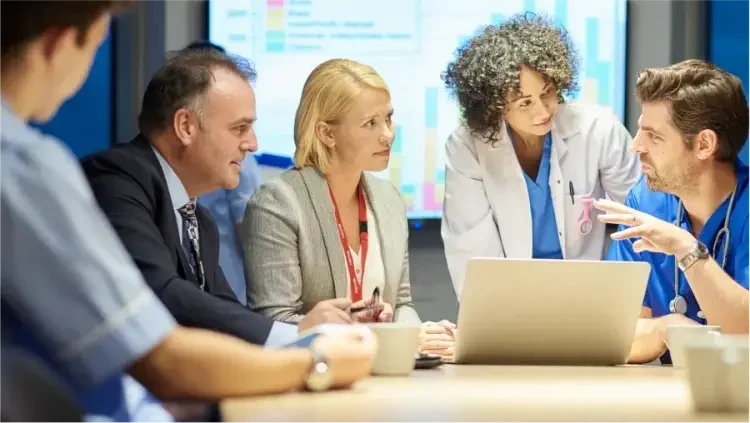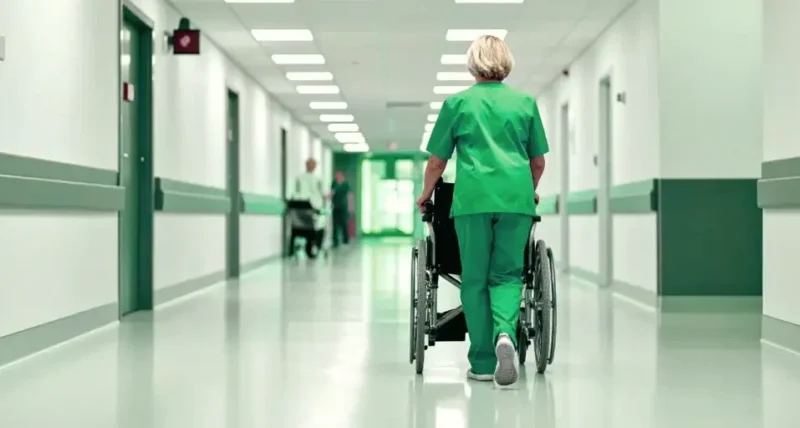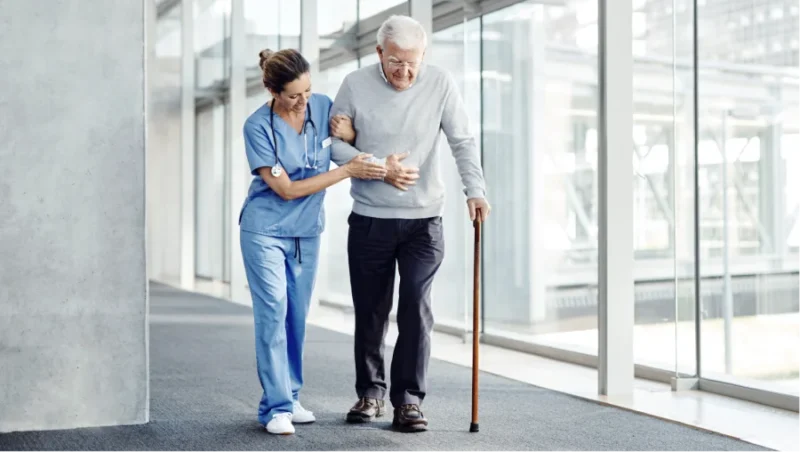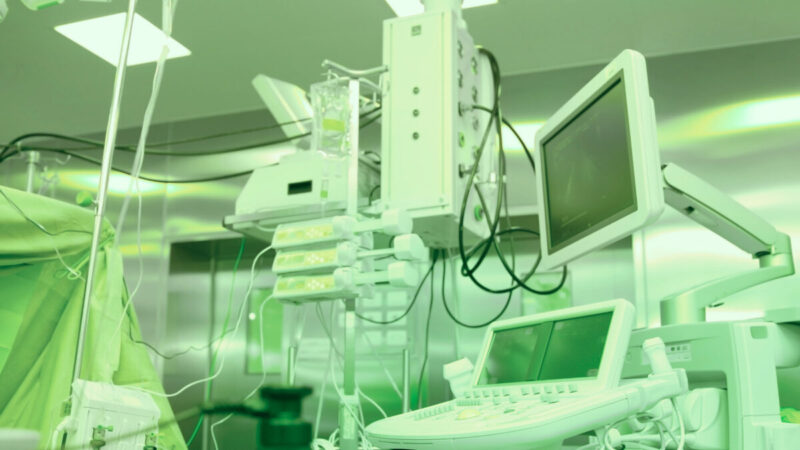asset tracking

Discover How RTLS Technology Enhances Safety, Streamlines Workflows, and Boosts Operational Efficiency in Modern Healthcare Facilities
In the complex environment of modern healthcare, efficiency and safety are paramount. Hospital administrators and senior care directors are constantly seeking innovative solutions to overcome operational bottlenecks, ensure patient and staff safety, and manage critical assets effectively. The pressure to do more with less, all while elevating the standard of care, is immense. This is where real-time location systems (RTLS) for healthcare emerge as a transformative technology, providing the visibility and automation needed to master these challenges. By offering an "indoor GPS" for facilities, RTLS is fundamentally changing how healthcare organizations operate.
What is RTLS and How Does It Work in a Healthcare Setting?
A Real-Time Location System is a technology platform used to automatically identify and track the location of objects or people in real time, usually within a building or other contained area. In a hospital or senior living facility, this is accomplished through a combination of components:
- Tags: Small, battery-powered devices attached to assets (like IV pumps and wheelchairs) or worn by people (staff and patients).
- Sensors: Networked devices installed throughout the facility that receive signals from the tags.
- Software: A central platform that processes the location data from the sensors and displays it on a digital map, providing real-time visibility, alerts and analytics.
Various technologies like Bluetooth Low Energy (BLE) and many others are used to enable this communication, allowing for precise, room-level accuracy. The result is a dynamic, live view of your entire operation, empowering your team to make faster, more informed decisions.
The Core Benefits of Implementing RTLS in Hospitals and Senior Living
The applications of RTLS in a clinical setting are vast, directly addressing the key goals of healthcare administrators: safety, efficiency, and compliance. Implementing a comprehensive RTLS solution delivers tangible benefits across the entire organization.
Enhanced Staff and Patient Safety
Protecting people is the highest priority. RTLS provides a powerful safety net with staff duress and nurse call automation. With the press of a button on a discrete badge, a staff member facing a volatile situation can instantly and silently summon help to their exact location. This is a critical tool for mitigating workplace violence, a growing concern in U.S. healthcare facilities. For patient safety, especially in RTLS for senior care, wander management systems create safe zones and trigger alerts if a resident with dementia or cognitive impairment strays into an unsecured area, preventing potential elopement incidents.
Optimized Asset Management
Searches for critical medical equipment waste valuable clinical time and delay patient care. U.S. hospitals lose an estimated 10-20% of their mobile assets annually, a significant financial drain. An RTLS-powered hospital asset management system eliminates this problem. Staff can instantly locate IV pumps, defibrillators, wheelchairs, and other vital equipment, reducing hoarding, minimizing rental costs, and ensuring that assets are available when and where they are needed most.
Streamlined Clinical Workflows
Operational efficiency is directly tied to the clarity of your workflows. Healthcare workflow automation powered by RTLS can track a patient's journey through the facility, identifying bottlenecks and optimizing patient flow from admission to discharge. It also enhances crucial processes like patient rounding compliance by automatically documenting that staff have visited patient rooms at required intervals, improving both accountability and patient satisfaction.
Improved Compliance and Environmental Monitoring
Meeting regulatory standards is non-negotiable. RTLS automates compliance tasks that are traditionally manual and error-prone. For instance, an electronic hand hygiene monitoring system can track compliance rates automatically, a key factor in infection control. Similarly, an environmental monitoring system uses RTLS sensors to continuously log temperatures in refrigerators and freezers containing vaccines, blood products, and lab samples, ensuring they remain within safe ranges and providing an automated audit trail.
Did you know?
Nurses can spend up to an hour per shift searching for equipment, leading to significant productivity losses. Furthermore, healthcare workers are five times more likely to experience a violent injury on the job compared to the overall workforce, highlighting the urgent need for better safety protocols.
Manual Processes vs. RTLS Automation: A Comparison
| Process | Manual Method | RTLS-Automated Method | Key Benefit |
|---|---|---|---|
| Asset Tracking | Staff manually search floors; rely on memory and logbooks. | Instantly locate any tagged asset on a digital map. | Reduces search time, improves asset utilization. |
| Staff Duress | Wall-mounted panic buttons or yelling for help. | Discreet button on a wearable badge sends location-specific alerts. | Faster response times, improved staff safety. |
| Compliance Audits | Manual observation and logging (e.g., "secret shoppers" for hand hygiene). | System automatically and continuously logs compliance data. | Accurate, unbiased data for reporting and improvement. |
Meeting U.S. Healthcare Standards with RTLS
In the United States, healthcare facilities are held to rigorous standards by accrediting bodies like The Joint Commission. Maintaining compliance is essential for reputation, funding, and patient trust. RTLS is a powerful tool for staying "survey ready." By providing automated, accurate, and real-time data, these systems help hospitals demonstrate adherence to standards related to the Environment of Care (EC), asset maintenance, and staff safety. For example, proving that 100% of critical life-support equipment has undergone preventive maintenance is simplified when you can locate every single device and have a digital record of its status. The rich data gathered by an RTLS analytics platform provides the evidence needed to satisfy auditors and drive continuous quality improvement initiatives across your organization.
Ready to Enhance Safety and Efficiency at Your Facility?
Discover how ZulaFly's cloud-hosted RTLS platform can provide the enterprise-wide visibility you need to protect your staff, optimize workflows, and deliver exceptional care. Our solutions are designed to integrate seamlessly into your existing environment.
Frequently Asked Questions
What is the typical return on investment (ROI) for an RTLS system?
The ROI for RTLS is driven by cost savings in several areas, including reduced equipment loss and rental expenses, improved staff productivity by minimizing search times, and increased patient throughput. Many facilities see a measurable ROI within 9 to 15 months by focusing on high-impact areas like asset tracking and workflow optimization.
How does RTLS integrate with our existing EMR/EHR systems?
Modern RTLS platforms are designed for integration. They can connect with EMRs, nurse call systems, and other healthcare IT solutions to share data and automate workflows. For example, a patient's location can be automatically updated in their electronic record as they move through different departments.
Is RTLS difficult for staff to learn and use?
User adoption is key, so leading RTLS solutions are designed with intuitive interfaces. Staff-worn tags are lightweight and often function with a single button press for duress alerts. The software dashboards are typically web-based and accessible via desktop or mobile RTLS apps, presenting information in an easy-to-understand map format.
What kind of hardware is required for a real-time location system?
A typical RTLS installation includes small electronic tags for assets and people, a network of sensors or readers placed in strategic locations throughout the facility. The specific hardware depends on the technology used (e.g., BLE, Wi-Fi, Infrared) and the level of location accuracy required.
Glossary of Terms
RTLS (Real-Time Location System): A technology platform that uses tags and sensors to track the precise location of assets and people within a defined space in real time.
BLE (Bluetooth Low Energy): A wireless communication technology used by many RTLS tags due to its low power consumption, allowing for long battery life.
Geofencing: The creation of a virtual boundary around a real-world geographical area. In RTLS, this is used to trigger alerts when a tag enters or exits a predefined zone.
Workflow Automation: The use of technology to automate manual processes. In healthcare, RTLS can automate tasks like documenting patient milestones or verifying staff rounding.
Asset Tracking Tag: A small, battery-powered device affixed to a piece of equipment that transmits a signal, allowing its location to be tracked by the RTLS network.



